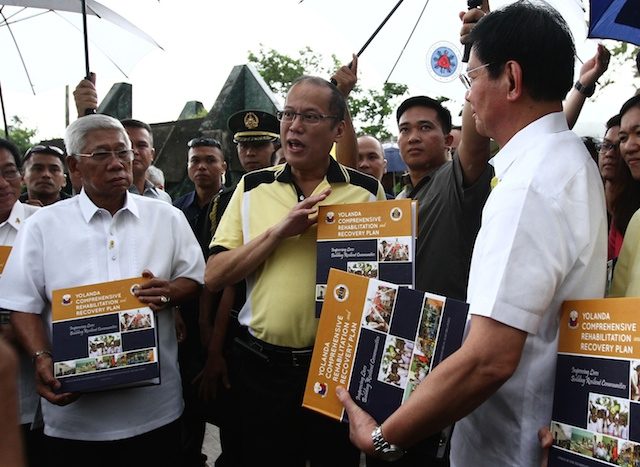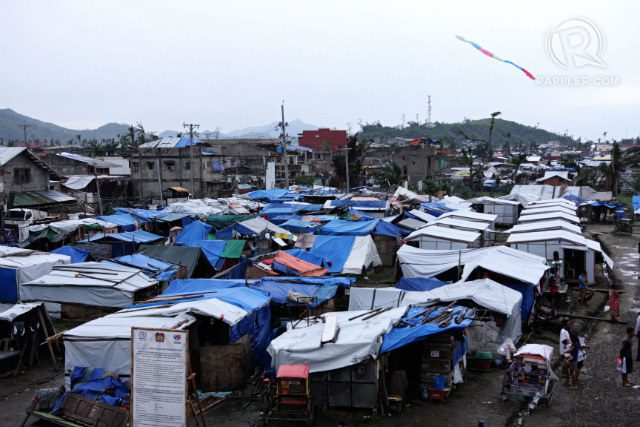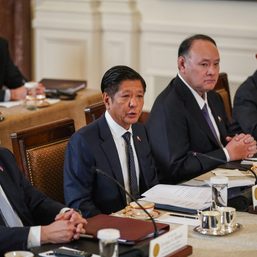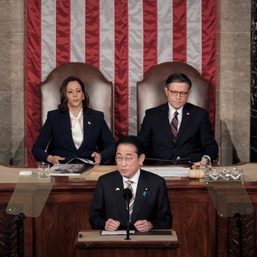SUMMARY
This is AI generated summarization, which may have errors. For context, always refer to the full article.

MANILA, Philippines (UPDATED) – The Philippines completed on Friday, August 1, the P170.7-billion ($3.93 billion*) master rehabilitation plan for areas hit by Super Typhoon Yolanda (Haiyan) nearly 9 months ago.
Rehabilitation Secretary Panfilo Lacson submitted the plan to President Benigno Aquino III on Friday, even as a bulk of it is virtually approved by the chief executive.
He told Rappler the comprehensive rehabilitation and recovery plan covers 4 basic sectors:
-
Resettlement – P75.6 billion ($1.74 billion)
-
Infrastructure – P35.1 billion ($807.55 million)
-
Livelihood – P33.6 billion ($773.04 million)
-
Social services – P26.4 billion ($607.39 million)
Lacson said it is unlikely that Aquino will reject this master plan and return it to his office for revision.
Aquino, after all, approved on July 25 the local rehabilitation plans for the “6 bigger areas” hit by Yolanda – Tacloban City, the rest of Leyte, Samar, Cebu, Iloilo, and Eastern Samar.
The Department of Budget and Management (DBM), too,”is ready to front-load” P137 billion ($3.15 billion) of the P170.7 billion needed.
With this submission, Lacson said his office is only asking the President to approve “the residual amount of P36 billion ($828.25 milion).”
He said once the DBM has front-loaded the funds to the implementing agencies, the next step is for these agencies to then “take center stage in the next phase in order to rebuild the communities and improve the lives of the survivors.”
‘Consultative, participatory’
Rehabilitation Undersecretary Lesley Cordero said the rehabilitation plan is 8,000 pages or 8 volumes thick.
Explaining the plan, Lacson added it also addresses concerns such as climate change adaptation, environment, gender-sensitive needs and equality, and disaster preparedness for future hazards.
He said the rehabilitation plan incorporates the following documents:
-
The strategic framework plan called Recovery Assistance on Yolanda or RAY, which the National Economic and Development Authority released in December 2013 and pegged rehabilitation at around P360.9 billion ($8.17 billion)
-
The post-disaster needs assessment vetted by the Office of Civil Defense
-
The local rehabilitation and recovery plans
-
The cluster action plans

The plan adheres to the internationally recognized “build back better” principle for disaster-hit areas, Lacson added.
Lacson’s office has explained his office adopts a “bottom-up” approach to rehabilitation.
This means, for one, doing rehabilitation on a per-province basis, instead of doing it all at once on a national scale. A former senator and police chief, Lacson said he wants a “bottom-up” process to avoid too much bureaucracy. (READ: 6 months after Yolanda: ‘We are failing’)
14,500 still in tents
The government, however, has drawn flak for a perceived delay in the master rehabilitation plan.
This, even as Aquino trumpeted his administration’s efforts for Yolanda survivors in his State of the Nation Address on Monday, July 28. (READ: SONA Fact Check: Half truths about Yolanda)
A consortium of international aid groups, for one, said it was alarmed that thousands still live in tents nearly 9 months after Yolanda.
More than 14,500 Yolanda survivors still live in tents as of Wednesday, July 30, according to data obtained by Rappler from the Department of Social Welfare and Development.
Composed of aid agencies Oxfam, Christian Aid, Handicap International, and Plan International, the group Surge said in a statement: “These communities are being exposed to tremendous risk and uncertainty. They urgently need to know when permanent relocation will move forward, what other settlement options they have, and what the implications will be for their livelihoods.” – Rappler.com
*$1 = P43.46
Add a comment
How does this make you feel?










There are no comments yet. Add your comment to start the conversation.